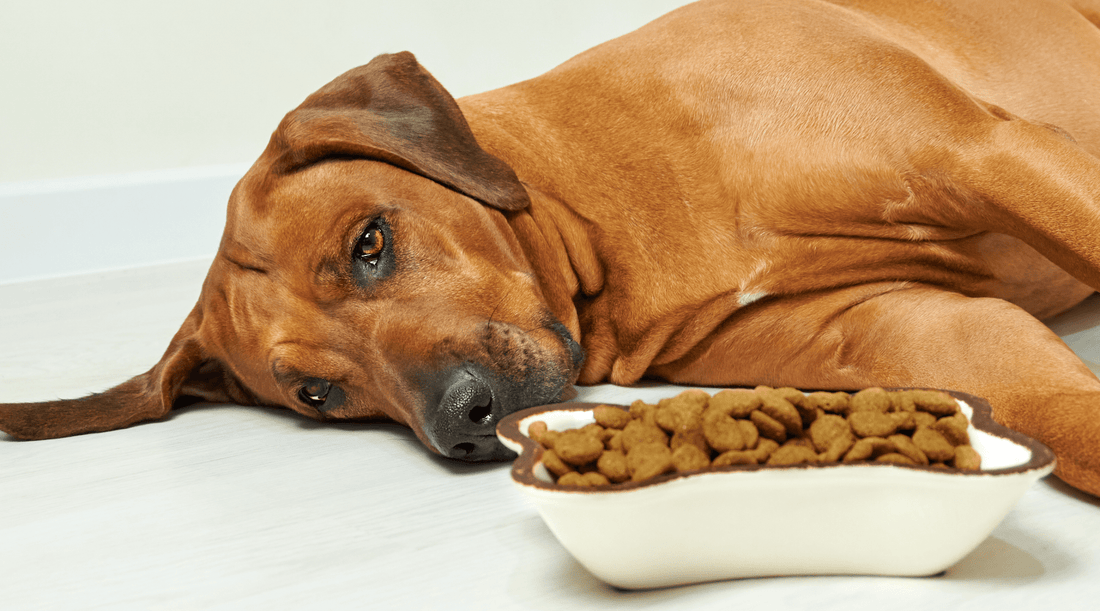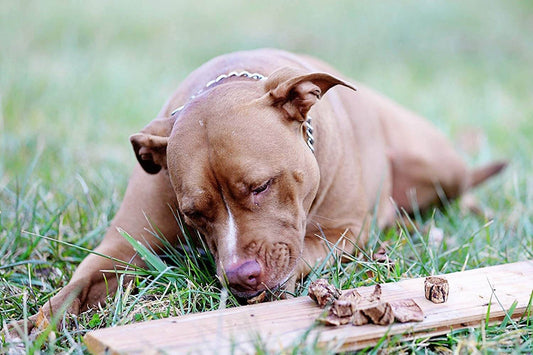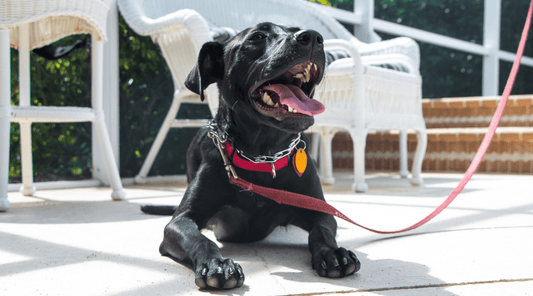
Dog Not Eating: The Day Pixie Turned Down Steak (Yes, Really)
Dawn Miller Apr 25, 20254 Minute ReadSo the other day...my dog refused to eat—steak.
Not old, overcooked steak I was ready to throw out. I’m talking warm, medium-rare, grass-fed sirloin—sliced just the way she likes it. I'm not saying my dogs get steak every day. But they are part of the family. So, when we're grilling, I do offer them a forkful, maybe more.
My little terrier, Pixie, who once dove headfirst into a compost bin for a wilted carrot, turned away like I’d offered her a shoe. That’s when I knew: something was definitely off.
If your dog’s not eating, I get it—it can be frustrating, a little scary, and weirdly personal, especially when they snub something delicious right in front of you or their favorite dog food when you just splurged on the bulk bag.
So, let's talk about what's just food snobbery? And when it's a sign of something more. Plus, I have some tips to help your pup get their appetite back.
Why Is My Dog Not Eating?
Dogs can't use words to tell us when something's wrong. So, when they skip a meal, they're trying to communicate.
And very often, it has nothing to do with the food itself. Something else is making food seem less than appetizing. Here are some possibilities.
They’re Feeling Stressed
New people? Loud noises? A sudden schedule shift? Even small changes—like moving a food bowl—can throw off their appetite. Dogs who already seem stressed are more likely to feel a little extra when things are "different".
Pixie once skipped dinner because I rearranged the dining room chairs. Sensitive much? Yes. Valid dog emotions? Also yes.
They’re Under the Weather
If your dog’s usually enthusiastic about food but suddenly refuses it, illness might be the culprit.
- Upset stomach
- Tooth pain
- Fever or lethargy
- Something stuck in their mouth (yep, that happens to dogs too.)
When in doubt, call your vet, especially if the change is sudden and lasts longer than a day or two. If they're also rejecting water, please don't wait that long.
They’re Just… Over It
Some dogs get bored with their food, especially if they’ve been spoiled with steak scraps and chicken toppers.
Don’t ask me how I know.
That said, dog nutrition experts nutritionally balance kibble to meet precise dog health needs. So no, they can't have a rotisserie chicken every day like they're on the Carnivore Diet.
It's important to find common ground.
When Picky Becomes a Pattern
Dog illness aside, if your pup gives you the ol’ "meh" at mealtime but lights up for Dog Treats, they might be holding out for something better.
And let’s be honest—we’ve all made that mistake. A few too many snacks, and suddenly kibble just doesn’t cut it.
And if even dog treats aren't setting off those tasty alert alarm bells in their heads, then you may need to choose a better dog treat.
So how do you get back on track?
How to Get a Dog to Start Eating
1. Address Anxiety with Something Soothing
If your dog seems to be foregoing dinner out of anxiety, it's time to learn how to help naturally anxious pups calm down and enjoy life.
Excessive barking, pacing, hiding, clinging, and destructive chewing are all signs this might be the case.
Just know, you can't possibly make everything less scary for a high-strung dog. But you can help them learn to manage stress.
Dogs chew on dog bones, toys, and sometimes your new running shoes to relieve stress. It's natural.
Give your dog a grass-fed beef dog bone so they have an acceptable channel for nervous energy.
2. Stick with a Routine
Put the bowl down for 15–20 minutes. If they don’t eat? Pick it up and try again later. No grazing. This may encourage a picky eater to eat while they can.
3. Improve Your Ability to Communicate with Your Dog
Teaching your dog commands enhances their understanding of you.
For example, you could teach your dog to sit while you pour their kibble. Not only does this get them out from underfoot while you're lugging a big bag from the cupboard. It also creates a routine in their mind.
I sit. Then I eat.
This can help dogs who are easily distracted or anxious.
Once they've mastered sit, don't stop there. Dog commands like Go Potty, Down, Leave It, Stay, Come, and Let's Go can become invaluable as the two of you navigate your lives together.
Experts think dogs can learn to understand around 120 unique commands when trained using positive reward training.
A well-trained dog is a happier dog because deep down, they want to understand how you think.
4. Offer a Chew First
This might sound strange, but an organ meat dog treat can help jumpstart appetite. These grass-fed beef lung bites are small, so they won't ruin their appetite. But they may get it going. Add roasted beef lung as a topper. And just see what happens!
5. Give Them a Dog Bone
Normally, I don't give my dogs a marrow bone right before dinner because I don't want to spoil mealtime.
But, if they're not eating anyway, this may be just the thing they need.
Chewing stimulates the digestive system and reduces stress. Plus, the marrow in a real bone is nutritious and incredibly appealing to dogs.
If that marrow bone is from grass-fed beef herds, it's also loaded with 2.5X the omega-3 fats plus protein, vitamins, and minerals. The collagen in bone marrow can also support the intestinal lining, reducing digestive upset that leads to skipped meals.
6. Check That You’re Not Over-Treating Treats
Now, I'm going to pull a 180 here and discuss over-treating as a cause for missed dinners.
We love our dogs. And sometimes we love them so much we ruin dinner. Too many snacks can suppress hunger—especially if they’re rich or fatty.
The American Kennel Club recommends that dog treats make up no more than 10% of a dog's diet. I keep a mental tally now.
First of all, stick with healthy dog treats with no strange ingredients, fillers, or added sugar. This allows you to give your dog more treats overall, because they're good for them.
If you follow this rule of thumb, then 10% amounts to a handful of beef lung treats for training sessions, every day.
Then, my dogs get a dog bone chew session, 2-3 times a week. I like to throw a crunchy trachea chew in there weekly for its teeth cleaning action.
Best Food for Picky Dogs
Complement their kibble diet with:
- Single-ingredient dog bones and treats.
- High protein treats...but remember dogs need fiber too!
- Irresistible dog treats like K9 Connoisseur’s lung bites
When to Worry
If your dog refuses food and also shows signs like:
- Vomiting or diarrhea
- Trouble chewing
- Low energy
- Excessive drooling
- Avoiding water
…it’s time to make a vet appointment. Better safe than sorry.
Keep Mealtime Positive
Use mealtimes as a chance to train, reward calm behavior, or practice impulse control. Meals aren’t just fuel—they’re a daily chance to bond.
Want help building a reliable feeding and training routine?
👉 Join the 7-Day Dog Training Challenge
Available On:
Disclosure: This article may contain affiliate links, which means we may earn a small commission if you make a purchase through these links—at no extra cost to you. We only recommend products we trust and believe will benefit you and your K9.





